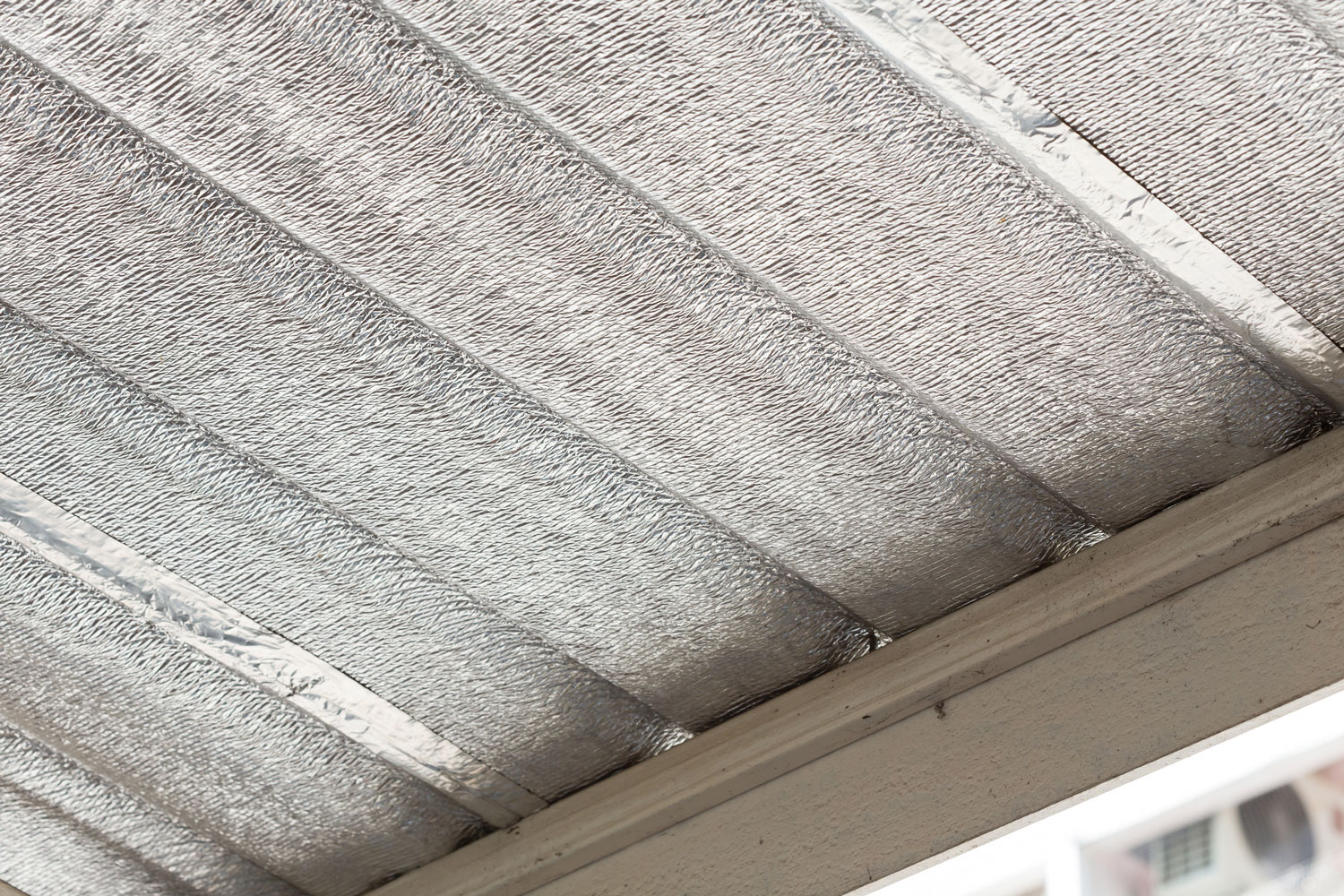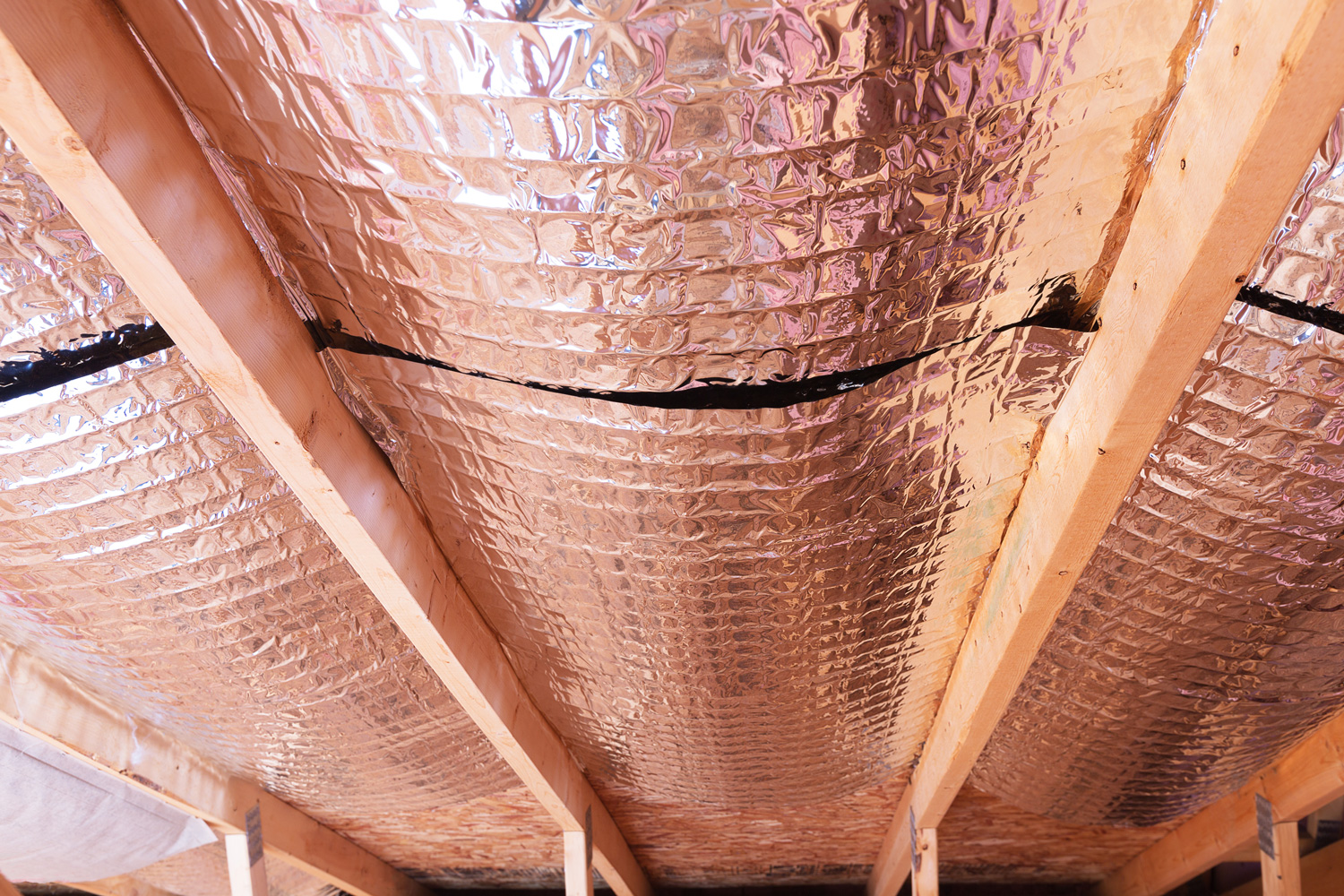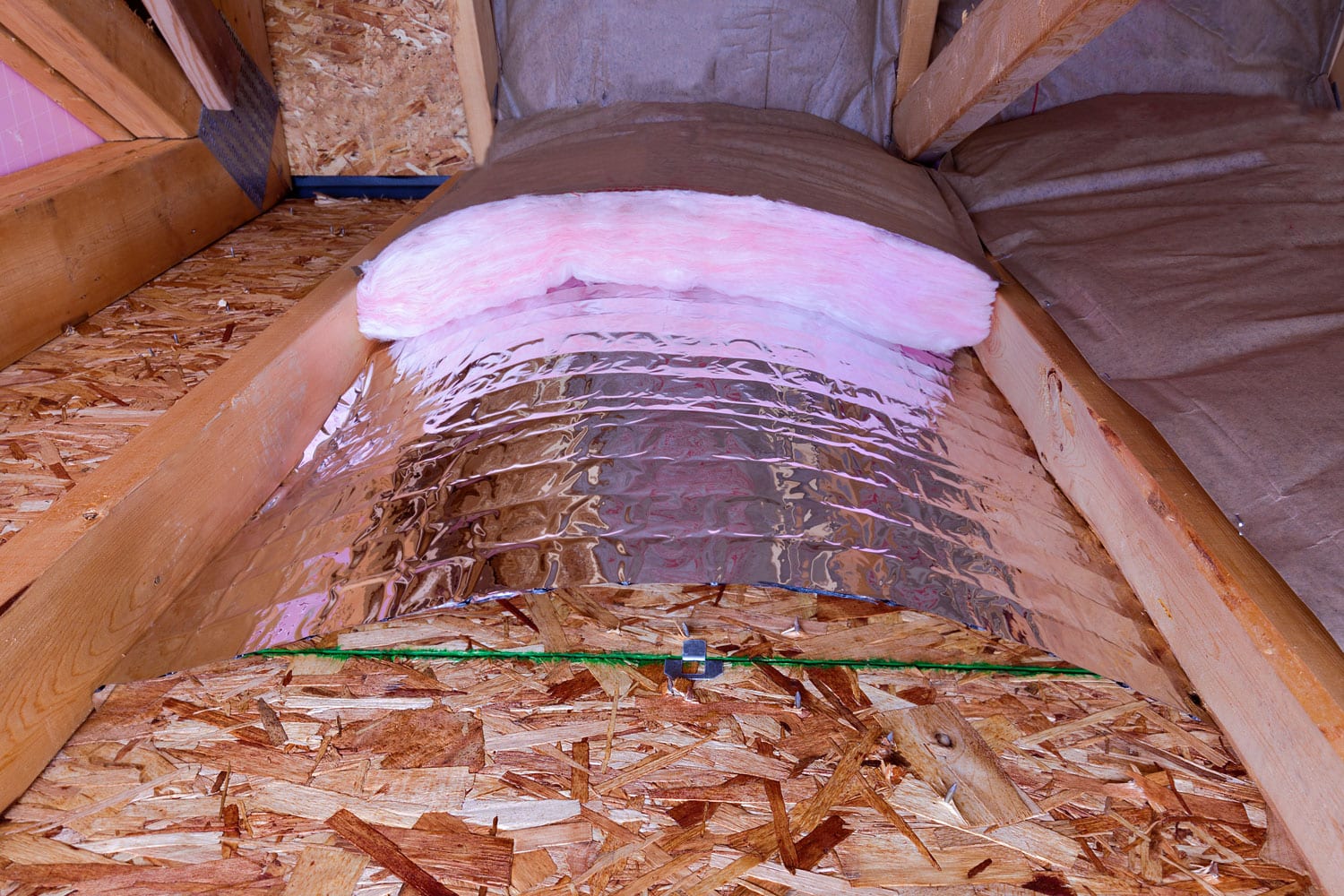Knowing which way radiant barriers should face will help you optimize their effectiveness in keeping your homes cooler. We asked experts about it and here's what we found out.
Radiant barriers should be facing down or towards the interior of your attic. This position allows them not just to reflect the sun's heat outside but also to emit only a minimal amount of heat inside the house. With low emissivity, there's limited heat gain so the temperature is cooler and more comfortable even when the weather outside is hot.
Keep on reading so we can explain further why your radiant barriers should be facing down. This article will also answer how much air space is needed when installing your radiant barriers, if these materials are ever worth it in Texas, and what their R-value is. We'll also answer if these barriers will block your Wi-Fi signal. Let's get started!

Does radiant barrier go up or down?
It is understandable then why more and more homeowners want to install radiant barriers at the underside of their roof. But when it comes to installation, which way do they face?
Radiant barriers are composed of different layers. The exterior layer or skin is made of a highly reflective material, usually in the form of an aluminum sheet or foil. Additional layers can be made of plastic, board, or kraft paper that'll help make these heat barriers more durable and flexible.
Radiant barriers are very effective in blocking heat because of their reflectivity. This is mainly attributed to their metal layer. So, where should you position this particular side of the barrier to maximize its effectiveness?

According to research conducted by the Florida Solar Energy Center, the foil-side of your radiant barrier should be facing down. It should be towards the interior of the house and right under the roof sheathing so that homeowners can optimize its effectiveness when it comes to reflectivity and emissivity.
Simply put, radiant barriers help make our homes cooler because it allows a very minimal amount of heat to enter. This is due to its low emissivity.
The metal sheet has high reflectivity and consequently, a very low emissivity. How much heat they emit is simply the inverse proportion of their reflectivity. So, if the barrier reflects 95% of heat, it only emits 5% of heat.
That's why the metal layer should be facing down so that minimal heat can pass through. This also means there is very little heat gain inside the house which allows homeowners to save on energy costs.
Why install radiant barriers?
Radiant barriers are seen as a cost-effective solution in bringing down energy costs. They help make homes cooler by blocking off radiant heat. This refers to the heat coming from the sun.
They reflect the heat to its source, which means that heat isn't allowed to pass through their membrane. Therefore, there won't be any heat gain inside the house.
Of course, this is only the ideal scenario. In reality, radiant barriers have a reflectivity rate of 95% to 97%. This also means that they only emit between 3% and 5% of radiant heat into the house.
This is a big help since only a small percentage of the sun's heat is transferred to our homes. That's why homes with radiant barriers are cooler and more comfortable.
Best of all, homeowners enjoy great savings in their electricity bills since their HVAC system doesn't have to work as hard as when there are no heat barriers in the roof portion. Your energy savings can be up to 17% per year according to the study done by Oak Ridge National Laboratory.
So, if you're spending $200 each month on your cooling system, you can be saving up to $408 a year when you have radiant barriers at home.
How much of an air gap is needed for radiant barrier?
Air space is another important aspect of installation. The radiant barriers shouldn't be directly installed on the underside of the roof. There should be a gap of about a half to three-quarters of an inch or even larger. This space will create a vacuum that'll be able to trap the radiant heat that the barriers are reflecting.
Take note that metals are also good conductors of heat. If they are in direct contact with your roof, ceiling, or walls, they will conduct heat flow instead of blocking heat.
When this happens, there'll be an increase in heat gain inside your house which would defeat the main purpose of the radiant barriers. Since the temperature is warmer, your cooling system will have to work harder to be able to provide your ideal room temperature.
This means that an improperly installed radiant barrier will be no good at all. It won't make you more comfortable during the hot summer months and you won't see any reduction in your electricity bills.
Is radiant barrier worth it in Texas?
Texas is known for its subtropical climate. Summers can get really hot, and winters can be very short with minimal chance of snow. It is humid in between these two seasons because of its proximity to the Gulf of Mexico.
Basically, Texans get plenty of sunshine all year round. And when there's sun, there's heat. That's why homes will benefit a lot from having radiant barriers installed on their attic or under the roof. These materials will help make their homes cooler by blocking the sun's heat and allowing only a very small amount of heat to pass through.
Since there's minimal heat gain, the air conditioning system of homes in Texas will not work extra hard especially when it's crazy hot outside. This will translate to reduced energy costs so there are more savings for the household.
What is the R-value of radiant barrier?

Does radiant barrier affect Wi-Fi?
Radiant barriers are made with a layer of metal sheet. Some homeowners are concerned that these materials will interfere with their Wi-Fi signal since metal is known for blocking radio waves. We all know how important internet connectivity is nowadays; that's why we also want to address this issue here.
Radio wave signals are used in communication technology to be able to transmit information between your Wi-Fi-enabled devices and your router. The radio wave frequencies used for the transmission of data are 2.4 GHz and 5 GHz.
The rate of data transmission happens at a very fast rate. But will this still be the case when there's a metal sheet under your roof that might interfere with the signal reception?
According to experts, you shouldn't worry because the metal layer in your radiant barriers isn't thick enough to be able to block radio wave signals. Yes, thickness is a factor in hindering the transmission of information. The thicker the metal is, the better it'll be in attenuating radio wave signals.
Since radiant barriers are only 3 to 5 mils or thousandths of an inch thick, they won't be able to block these high-frequency waves.
Also, these heat barriers are just usually installed in the attic or underside of the roof. This means there will only be 20% to 35% coverage of the total surface area. Even if your metal sheets are thick, there are other portions of the house where the radio wave signals can pass through to reach your devices and your router.
Routers also come with a strengthened antenna that makes them capable of handling signal interference issues and still connects you to the nearest cell tower.
So, unless the radiant barrier is actually between you and your router, it won't significantly affect your Wi-Fi signal.
Final Thoughts

Proper installation of your radiant barrier will help you get the most out of it. Make sure that the foil side is facing down, it's under the roof sheathing, and there's sufficient air space where most of the radiant heat can be reflected.
If you want to read about insulation, feel free to visit the following links:
